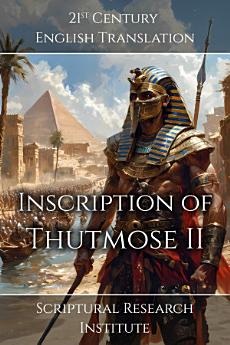Inscription of Thutmose II
Про цю електронну книгу
After he died, she first declared herself regent of his young son Thutmose III, and then later assumed the kingship under her own name, claiming that her father Thutmose I had wanted her to be his heir. Under her rule, Egyptian policy was virtually the same as during Thutmose II’s reign, supporting the idea that she was the real power during his reign. Additionally, several raised relief scenes from a Karnak gateway dating to Thutmose II’s reign depict both of them together, while others depict her alone, as the king would usually be depicted. During her later kingship, her cartouche was depicted on the gateway at Karnak, proving she was considered a rightful king at the time, even though most evidence of her kingship was later erased under the rule of Thutmose III, who viewed her as his regent.
One of the few records of Thutmose II’s reign is the Inscription of Thutmose II’s campaign into Nubia to crush the rebelling Nubians in 1527 BC. It was discovered in the late 1800s along the road between Thebes and Philae, which was an island near the first cataract of the Nile before the creation of Lake Nasser flooded the region in the 1970s. By all accounts, Thutmose II did not participate in the campaign into Nubia, and his herald Ahmose Pen-Nekhbet did not mention the campaign in his autobiography.










